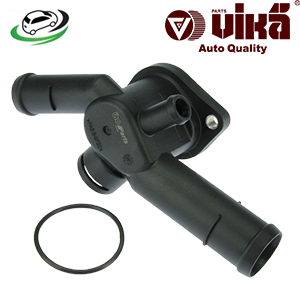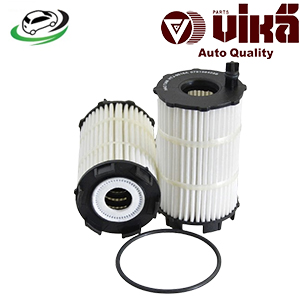-8%
Get Ignition Coil Audi A4/A5/A6/Q5/Q7 3.0 3.2 FSI 06E905115A
The ignition coil is a crucial component in a vehicle’s ignition system, responsible for transforming the low voltage from the battery into the high voltage needed to ignite the air-fuel mixture in the engine’s cylinders. This process is fundamental for starting the engine and ensuring its smooth operation. In this comprehensive exploration, we will discuss the design, function, types, common issues, and maintenance of the ignition coil.
Design and Function
Design:
- Core Components:
- Primary and Secondary Windings: The ignition coil consists of two sets of windings: the primary winding and the secondary winding. The primary winding is made of thick wire with a few hundred turns, while the secondary winding is made of thinner wire with thousands of turns. These windings are wrapped around a soft iron core, which enhances the magnetic field generated during operation.
- Iron Core: The core is typically made of laminated iron to improve the efficiency of the magnetic field. This core plays a critical role in transferring energy between the windings.
- Insulation and Casing: The windings and core are encased in a protective housing made from materials like plastic or metal. Inside, the windings are insulated with a material that can withstand high temperatures and prevent electrical shorts.
- Terminals and Connections:
- Primary Terminals: The ignition coil has two primary terminals that connect to the vehicle’s battery and ignition control module or distributor. These terminals carry the low-voltage current from the battery.
- Secondary Terminal: The secondary terminal, also known as the high-voltage terminal, connects to the spark plug via the distributor or directly (in some coil-on-plug systems). This terminal delivers the high-voltage spark needed to ignite the air-fuel mixture.
Functionality:
- Voltage Transformation:
- Step-Up Transformer: The ignition coil functions as a step-up transformer. When the ignition switch is turned on, current flows through the primary winding, creating a magnetic field around the core. When this current is suddenly interrupted (by the ignition control module or distributor), the magnetic field collapses rapidly, inducing a high voltage in the secondary winding.
- Voltage Boost: The primary winding typically operates at 12 volts, but the secondary winding can generate thousands of volts (anywhere from 15,000 to 45,000 volts or more). This high voltage is necessary to create a spark strong enough to jump the gap in the spark plug and ignite the fuel mixture.
- Ignition Timing:
- Controlled Sparking: The ignition coil’s operation is timed precisely by the ignition system, which may use a distributor or electronic control module. This timing ensures that the spark occurs at the right moment in the engine’s cycle, typically just before the piston reaches the top of its compression stroke.
- Sequential Firing: In engines with multiple cylinders, the ignition coil must fire in a specific sequence to ensure each cylinder receives a spark at the correct time. This sequencing is managed by the ignition system, which directs the coil’s output to the appropriate spark plug.
Importance of the Ignition Coil
- Engine Starting:
- Initial Spark Generation: The ignition coil is critical for starting the engine. Without the high-voltage spark it generates, the air-fuel mixture in the engine’s cylinders would not ignite, and the engine would not run.
- Reliable Performance: A functioning ignition coil ensures that the engine starts reliably every time. If the coil fails, the engine may struggle to start or may not start at all.
- Engine Performance:
- Smooth Operation: The ignition coil’s role in providing timely and powerful sparks is essential for smooth engine operation. A weak or inconsistent spark can lead to misfires, rough idling, and poor acceleration.
- Fuel Efficiency: By ensuring complete combustion of the air-fuel mixture, the ignition coil helps maintain optimal fuel efficiency. An inefficient ignition system can result in unburned fuel, which reduces fuel economy and increases emissions.
- Emissions Control:
- Complete Combustion: Properly timed and powerful sparks from the ignition coil ensure that the air-fuel mixture is fully combusted, reducing the emission of harmful pollutants like carbon monoxide and hydrocarbons.
- Catalytic Converter Protection: A misfiring engine can send unburned fuel into the exhaust system, potentially damaging the catalytic converter. A reliable ignition coil helps prevent this by ensuring consistent combustion.
Types of Ignition Coils
- Conventional Ignition Coil:
- Single Coil System: In older vehicles with distributor-based ignition systems, a single ignition coil is used to generate the high voltage for all cylinders. The distributor then directs the spark to the correct cylinder in sequence.
- External Coil: The coil is typically mounted externally on the engine block or firewall and connected to the distributor via high-voltage wires.
- Distributor-less Ignition System (DIS) Coil:
- Multiple Coils: In distributor-less ignition systems, each pair of cylinders may have its own ignition coil, eliminating the need for a mechanical distributor. This setup improves reliability and timing precision.
- Coil Packs: These systems often use coil packs, which contain multiple ignition coils in a single housing. Each coil in the pack is dedicated to a specific cylinder or pair of cylinders.
- Coil-on-Plug (COP) System:
- Individual Coils: The coil-on-plug system is a more modern design where each spark plug has its own dedicated ignition coil mounted directly on top of it. This design eliminates the need for high-voltage spark plug wires, reducing energy loss and improving reliability.
- Direct Ignition: COP systems are often found in modern vehicles and high-performance engines. They provide more precise ignition timing and are more efficient than traditional systems.
- Coil-Near-Plug (CNP) System:
- Proximity-Based Coils: In coil-near-plug systems, the ignition coils are mounted close to the spark plugs, connected by short high-voltage leads. This setup offers similar advantages to coil-on-plug systems but allows for more flexible packaging in the engine bay.
Common Issues with Ignition Coils
- Coil Failure:
- Overheating: Ignition coils can overheat due to continuous use, exposure to high engine temperatures, or internal short circuits. Overheating can cause the coil to fail, leading to weak or no spark.
- Wear and Tear: Over time, the internal insulation of the coil windings can degrade, leading to short circuits or open circuits within the coil. This can result in intermittent or complete loss of spark.
- Misfires:
- Inconsistent Sparking: A failing ignition coil may produce weak or inconsistent sparks, leading to engine misfires. Misfires can cause rough idling, poor acceleration, and increased emissions.
- Cylinder-Specific Issues: In systems with multiple coils (like COP or DIS), a single coil failure will typically affect only one or two cylinders, leading to a specific cylinder misfire.
- Poor Fuel Economy:
- Incomplete Combustion: If the ignition coil fails to provide a strong spark, the air-fuel mixture may not combust completely, leading to wasted fuel and reduced fuel economy.
- Increased Emissions: Incomplete combustion also increases the emission of harmful pollutants, as unburned fuel is released into the exhaust system.
- Difficulty Starting the Engine:
- Weak Spark: A failing ignition coil may produce a weak spark, making it difficult to start the engine, especially in cold weather or after the vehicle has been sitting for a long period.
- No Spark: In severe cases, the ignition coil may fail completely, preventing the engine from starting at all.
Maintenance and Inspection
- Regular Inspection:
- Visual Checks: Inspect the ignition coils regularly for signs of wear, such as cracks in the casing, corrosion on the terminals, or burn marks. Check for any loose or damaged connections.
- Check for Trouble Codes: Modern vehicles equipped with onboard diagnostics (OBD) systems can detect ignition coil issues. A diagnostic scan can reveal trouble codes related to ignition coil failures, such as misfire codes (P0300-P0312).
- Testing the Coil:
- Resistance Testing: Using a multimeter, you can test the resistance of the primary and secondary windings to determine if the coil is functioning correctly. Abnormal resistance readings may indicate a faulty coil.
- Spark Test: A spark test can be performed to check if the ignition coil is producing a spark. This involves grounding a spark plug while connected to the coil and cranking the engine to observe if a spark is generated.
- Replacement Intervals:
- Follow Manufacturer’s Recommendations: Replace ignition coils according to the vehicle manufacturer’s recommended intervals, or sooner if signs of wear or failure are detected.
- Proactive Replacement: If the vehicle experiences frequent misfires or difficulty starting, it may be wise to replace the ignition coils proactively, especially if they are old or have high mileage.
- Use Quality Parts:
- OEM or High-Quality Aftermarket Coils: When replacing ignition coils, it is important to use OEM (Original Equipment Manufacturer) or high-quality aftermarket parts to ensure reliability and performance. Low-quality coils may fail prematurely or provide inconsistent performance.
- Address Underlying Issues:
- Ignition System Maintenance: Regularly inspect and maintain other components of the ignition system, such as spark plugs, ignition wires, and the ignition control module. Issues with these components can place additional stress on the ignition coils and lead to premature failure.
Follow us on Facebook for more parts.





